18 December 2009
On song: a discussion of selected recent works for a cappella choir by Matthew Orlovich
 Image: Matthew Orlovich
Image: Matthew Orlovich Introduction
The Tap
When I was a student at Ramsgate Public School in Sydney's southern suburbs, back in the early 1980's, it was announced one day that an audition would be held for anyone interested in joining the school's choir. About thirty or forty children - myself included - showed an interest and assembled in the school hall. Our conductor, Miss O'Brien (a.k.a. the school's librarian) arranged us into neat rows and got things under way by asking us to sing a familiar tune together. As we sang, she slowly paced up and down each row, listening closely to each voice. A discreet tap on your shoulder from Miss O'Brien meant that you had passed the audition and were expected to turn up at the next rehearsal. No tap on the shoulder meant no cigar.
And so it was - with a tap on the shoulder - that I gained entry into the big, wide world of choral music. In the years that followed, as a member of my primary and, later, secondary school choirs, I got to know choral music from a singer's perspective, first as a treble voice and then as a second bass. Particularly memorable for me were the annual NSW Combined School Choral Concerts held at the Concert Hall of the Sydney Opera House. Here, massed school choirs sang repertoire ranging from Michael Hurd's The Daniel Jazz to G. F. Handel's Zadok the Priest.
Fast Forward
In the early 1990s, I was attending Sydney University and studying music composition with Peter Sculthorpe when my attention was drawn to an advertisement for the 1991 2MBS-FM Young Composers Award. The competition brief was to write an original work for The Song Company, directed by Roland Peelman.
In response, I composed On Sutherland's Grave, a work which combines three distinct texts: 'Sutherland's Grave' from Selected Poems of Henry Kendall, 'Journey to Birdsville Nov. 1966' from The Log and Field Book of Sir Russell Drysdale and 'Requiem aeternam' from Missa pro defunctis. For my efforts, I received the 'Highly Commended' award plus a performance - courtesy of The Song Company - which was broadcast live on 2MBS-FM.
On Sutherland's Grave went on to be included in the repertoire of many different choirs, such as the Contemporary Singers, the Sydney Conservatorium Chamber Choir, the Ronald Dowd National School for Singers' Contemporary Choral Group, and the Queensland University Musical Society. It also featured amongst the national and international tour repertoire of the Sydney Philharmonia Motet Choir and The Australian Voices.
Since writing On Sutherland's Grave, I've been fortunate to have received a string of commissions for new pieces from a variety of choirs, such as The Australian Voices, the Harvard University Choir, In Harmony Choir, St Peters Chorale, the NSW Combined Primary and Secondary School Choirs, the Brisbane Chorale, the Hunter Singers, the Gondwana Voices, the Waratah Girls Choir and Sydney Philharmonia Choirs, to name but a few.
Partly, this interest in my choral music is thanks to 'word of mouth'. But there is another factor at work, too: a desire, on the part of choirs, to engage with living, breathing composers, and to sing the music of their own time and place. Added to that is their desire to share their repertoire with other people around the world. Despite often having to look high and low for funds, an ever-increasing number of choirs are actively commissioning new works, releasing CDs of their repertoire and undertaking tours to places near and far.
The Blue Gum Forest for a cappella SATB choir and bass baritone soloist (2009)
Amongst my most recent pieces for choir is a work entitled The Blue Gum Forest. Commissioned for the 60th Australian Intervarsity Choral Festival, it received its premiere in July 2009 at the Stanley Burbury Theatre in Sandy Bay, Tasmania, under the direction of June Tyzack. The work is of approximately twenty minutes duration and comprises four separate movements.
The text of The Blue Gum Forest is based on Roland Robinson's poem of the same name. Writing about a bushwalking trek, the poet describes how he crashed and clambered down sheer gorges' walls to find a timeless forest of magnificent blue gums. The beauty of the forest stops him in his tracks. He admires the gum leaves which 'mingle in myriad tongues' and observes the lichens, moss and ochre-red fungi at his feet. Ever questioning, the poet wonders, 'Why do I stand here, stare about me?'
When imagining the opening bars of my setting (see Music example 1), I envisaged a big, broad sound to evoke the greatness of the outdoors. My choice of tempo (M.M. crotchet = c.72) is intended to allow each note sufficient time to carry to the farthest reaches of the performance space. I chose to introduce the words of the poem very gradually: 'Why, oh why' is followed by 'Why, oh why do I…' then 'Why, oh why do I stand here, stare about me?'
Music example 1 (click to enlarge): The Blue Gum Forest, bars 1-5
A couple of minutes after the commencement of the first movement, the soloist makes his entrance, describing how thirty years have passed since last he clung, clambered and crashed his way down the sheer gorges' walls and into the Blue Gum forest. Keeping in mind the poet's description of the steep terrain and wishing to reflect his strenuous attempts to negotiate it, I characterised the soloist's part by frequently employing wide, intervallic leaps and descending, arpeggio-like figures.
Music example 2 (click to enlarge): The Blue Gum Forest, bars 43-46
It was a great pleasure to have the outstanding Tasmanian bass baritone, Christopher Richardson, perform the solo role at the premiere performance of the work. Chris's expressive range was a real delight to write for and his richly timbred voice complemented perfectly the mixed choir's tonal palette. The experience of hearing this blend of choir and soloist at the premiere has inspired me to further explore the medium.
The second movement of The Blue Gum Forest begins with the sound of forest birdsong. The choristers mimic the birdsong by whistling and also by tightly puckering up the lips and sucking in a tiny amount of air (i.e. like the beginning of an audible kiss, but resulting in a high pitched, brief, bird-like chirrup). From these forest sounds, there emerges a vibrant song. In 6/8 time, it's set to a text about naked smooth blue gums, overarching limbs and mingling leaves.
I am told by many of the Intervarsity choristers that this music has a tendency to get 'stuck in your head for ages'! When scoring it, I shared the melody amongst the divided choir parts so as to bring extra vocal colour and energy to the music. A prominent, repeated quaver rhythm is incorporated into the choral texture and also shared between the various voice parts (see Music example 3). I find that the inclusion of such a rhythm within the texture of the score propels the music and gives the choristers the satisfying feeling of being 'in the groove' while they are performing.
Music example 3 (click to enlarge): The Blue Gum Forest, bars 112-117
Between the second and third movements, a choral soundscape is heard once more, this time comprising forest birdsong plus my choral equivalent of quiet, bubbling water sounds. The bubbling water effect has made appearances in several of my compositions to date, first in Links (for a cappella SATB choir), and later in Waratah (for SATB choir, brass and percussion), All is one and one is all (for a cappella SATB choir) and White Horses (for symphonic wind ensemble). The effect of the bubbling water is achieved by the choristers clicking their tongues as per instructional footnotes in the score. Here, in this third movement of The Blue Gum Forest, the birdsong and water sounds set the scene for when choir and soloist sing of treading below the tall blue gums - amidst lichens, moss and ochre-red fungi - and of sinking into the pungent mould.
When scoring my choral works, I try to keep in mind the vocal colours which the various vocal parts can bring to the music. Music example 4 illustrates how, in the third movement of The Blue Gum Forest, a lyrical melodic line is assigned to the bass baritone soloist while the choristers accompany it with (a) held notes, coloured by the vowels they sing, and (b) a 'choral pizzicato' effect (a technique which makes an appearance in various of my choral scores and which lends a degree of rhythmic and harmonic definition to the music).
Music example 4 (click to enlarge): The Blue Gum Forest, bars 255-257
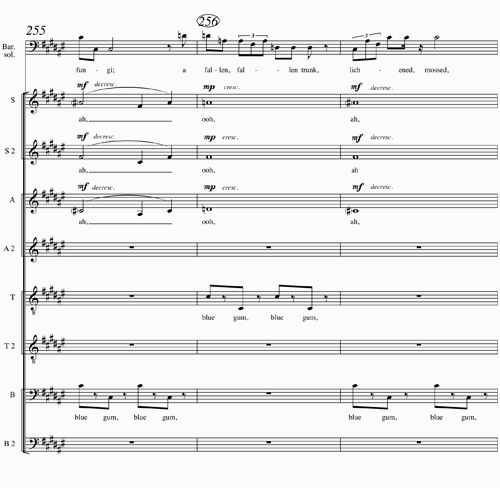
Courtesy of the soprano voices, the calls of Laughing Kookaburras
(Dacelo novaeguineae) herald the fourth and final
movement of The Blue Gum Forest:
koo-koo-koo-koo-koo...
koo-koo-koo-kaa-kaa-kaa-kaa-kaa-kaa-kaa-kaa-kaa-koo-koo-koo…
After the Kookaburras' calls build to a raucous climax, the full choir enters - part upon part - with a uplifting, ascending music, singing of the 'blue-grey pipes' and how they 'soar to their arches that lull, linger, leave off, then swell'. Over the duration of the final movement, the choir and soloist generate considerable melodic and rhythmic impetus. The last lines of Robinson's poem - 'hail, all hail in hosannas, in hosannas' - are broadly set to music which recalls the opening bars of the composition.
Looking back on the occasion of the premiere, I feel that a lot of things were in place that helped to ensure the successful presentation of the work. A two-week rehearsal camp preceded the premiere, so a decent amount of rehearsal time was afforded the work. Also of great value was the contribution made by June Tyzack whose motivating rehearsal techniques and precision of conducting brought the choir to its peak right on the night of the concert.
I must also give credit to the wealth of experience and the enthusiasm which is contained within the ranks of the Intervarsity Choir. These qualities shone through in performance and made the premiere a really satisfying and memorable one for me, not to mention a 'truly inspiring' one for Tasmanian Mercury critic, Ms Elizabeth Ruthven! 1
Post-concert reactions to The Blue Gum Forest were shared amongst the choristers in the days and weeks after the Intervarsity Festival, via email and Facebook, etc. Here is a small sample of the choristers' reactions to the premiere:
Thanks for all your support for IV, and especially for the Blue Gum: it was such great fun to sing! (Richard)
As for The Blue Gum Forest, I knew it was going to be good, but... *faint*... absolutely gorgeous. … So congratulations to you on another beautiful piece of music shared with the world :):):) (Monica)
Thanks for your wonderful piece - it was a real joy to be a part of seeing such a great new piece of Australian music come to life! (Simon)
… I was amazed at how well it went... somehow we peaked at exactly the right time! (Mark)
i can't get blue gums out of my head...and i don't want to...please never stop composing for choirs :) (Ayla)
I hope you were happy with your piece's first performance... the choir certainly enjoyed themselves singing it! (Andrew)
Carols born of an Australian Christmas experience.
With Christmas once again just around the corner, I shall conclude with a brief mention of two carols which were generously commissioned by Mr Peter Barclay of Oriana Chorale. Under the direction of Tobias Cole, the carols received their premiere performances on 21st December 2008 at Main Hall, National Museum of Australia in Canberra.
Both carols are scored for a cappella SATB choir and based upon texts by Australian poets. The titles of the two carols are If Christ had been born in another time (text by Pat Edwards) and Nativity (text by James McAuley). The duration of each carol is approximately 4 minutes.
If Christ had been born in another time… (for a cappella SATB choir, 2008)
If Christ had been born in another time… reflects on what the Christmas story might have been like had Mary and Joseph lived in the Australian Outback. 'Would there have been no room in the pub?' 'Would they have been turned away while drovers and stockmen jostled the bar toasting the end of the day?' Would the Wise Men have brought gifts of 'perfume and oil from the eucalypt tree' or 'gold from a river's bed'?
My setting of Edwards's text is high-spirited from start to finish, with the sounds of Laughing Kookaburras used to introduce the piece. (It was the success of the Kookaburras' calls in the Oriana Chorale's premiere performance of this carol that encouraged me to include them in The Blue Gum Forest).
Music example 5 (click to enlarge): If Christ had been born in another time, bars 1-20
At bar 17 (see Music example 5), a prominent melodic line asserts itself and thereafter weaves its way through the whole work, sometimes appearing in the tenor and bass registers, at other times in the soprano and alto lines, and occasionally scored at the octave.
When composing my choral music, I spend a lot of time singing all the vocal parts in order to gauge if they are 'singer-friendly'. To help the choristers perform with confidence, I try to pre-empt the pitches of their various entries with notes scored somewhere within the texture of the preceding bars. Also, if I require the choristers to sing repetitive motifs that extend for more than a few bars (see Music example 6), I tend to divide the material between groups of singers so that breaths may be taken and so no one gets too tired. I also keep a watchful eye on the tessitura of each voice part as I score the work.
Music example 6 (click to enlarge): If Christ had been born in another time... bars 71-73
The melodic line continues weaving its way through the work, occasionally turning back upon itself, until it reaches its climax at the closing bars of the carol, whereupon it gives way to the return of the Kookaburras who, cackling merrily, have the last laugh.
Nativity (for a cappella SATB choir, 2008)
In contrast to the extroverted and energetic music of If Christ had been born in another town…, the second of my carols, entitled Nativity, reflects more a mood of ecstatic calm. When writing the composer's note which accompanies the score, I referred to McAuley's poem as an invitation into another world:
…a world of dew drops and spider webs, tender snails' horns and a bare attentiveness of the heart, a world where everyday things become breathtaking and extraordinary.
Seeking to reflect the poet's intensity of focus in my musical setting, I scored a simple and recurring arpeggio that, shared between the tenor and bass voices, creates a calming, constant presence throughout the work. For me, the rising and falling notes of the arpeggio become entrancing, especially as the material is heard constantly shifting between tenor and bass voices.
The first page of my score (see Music example 7) illustrates the division of labour between the lower voices, and the close harmony that is typical of the soprano and alto parts in this carol.
Music example 7 (click to enlarge): Nativity, bars 1-6.
The overall form of the carol is of a symmetrical nature, with the poet's two verses set in a strophic fashion. Separating these two verses is a little Interlude of 4 bars duration, the material of which is cut from the same cloth as the Introduction and Coda.
The form of the work, in summary, is:
Introduction (b. 1-9)
Verse 1 (b. 10-25)
Interlude (b.26-29)
Verse 2 (b.30-45)
Coda (b.46-55)
At the time of composing the work, I made use of a handy 'virtual tour' on the National Museum's website. It helped me to get a feel for Main Hall - the venue at which the premiere performance was to take place - enabling me to mentally try out my various musical ideas in that space. This virtual tour prepared me well and, on the day of the premiere, I was able to hear the repetitious, trance-like arpeggios take on exactly the resonance that I had imagined might be there, courtesy of the venue's impressively high ceilings, angled glass walls and expansive, tiled floors.
Photo: Oriana Chorale, directed by Tobias Cole, performing at Main Hall, National Museum of Australia, on 21st December, 2008.
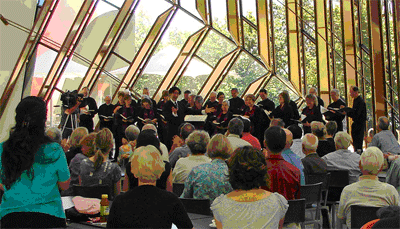
I must admit I've always had a soft spot for Frosty the Snowman and Rudolph the Red-Nosed Reindeer and wouldn't want to see them disappear from the Christmas repertoire! I do, however, feel that there's plenty of room for adding more carols to the mix. I heartily commend Oriana Chorale for having the vision and the initiative to take the reindeer by the horns and to encourage the creation of fresh, new carols that are born of an Australian Christmas experience.
Finally, I would like to give credit and thanks to the 60th Australian Intervarsity Choir and the Oriana Chorale for commissioning and performing the works discussed in this article. I also gratefully acknowledge the contributions of the poets Roland Robinson, Pat Edwards and James McAuley, whose texts have inspired my work. Much thanks is also extended to HarperCollins Publishers and Pat Edwards for granting me permission to set the poetry to music.
Notes
1) Ruthven, Elizabeth, 'Choir celebrates with real gems', in Mercury [Tasmania, Australia], Edition 1, Tuesday 21 July 2009, p. 13.
Further links
Matthew Orlovich -
AMC profile
Oriana Chorale (http://www.orianachorale.com.au/)
© Australian Music Centre (2009) — Permission must be obtained from the AMC if you wish to reproduce this article either online or in print.
Subjects discussed by this article:
Matthew Orlovich is a freelance composer based in Sydney, Australia. He writes music for solo instrumentalists, large and small ensembles, choirs and orchestras. His compositions have been performed throughout Europe, as well as in Canada, the Middle East, the USA, Australia and New Zealand. At present, Matthew is working on new choral works for the Sydney Conservatorium Chamber Choir and Concordis Chamber Choir, in addition to a major new work for virtuoso Australian saxophonist, Barry Cockcroft. Matthew welcomes your correspondence and maintains a website at www.mattheworlovich.com.
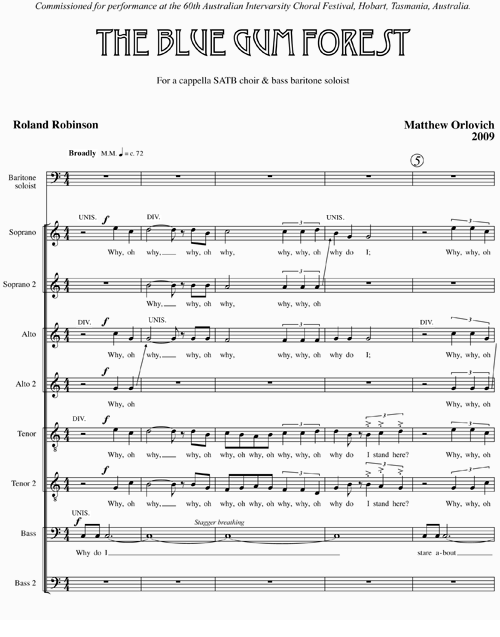

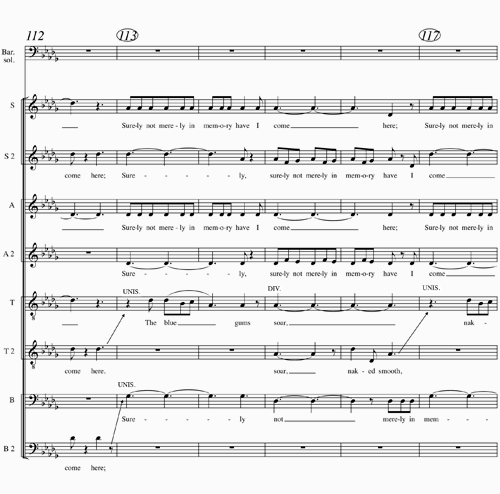
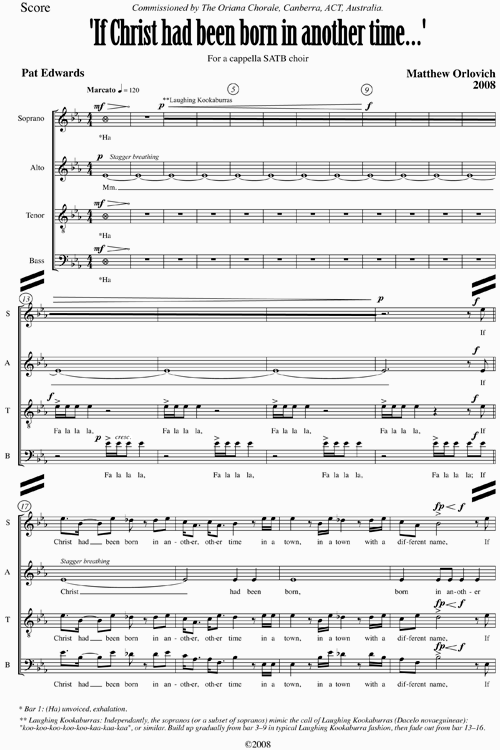
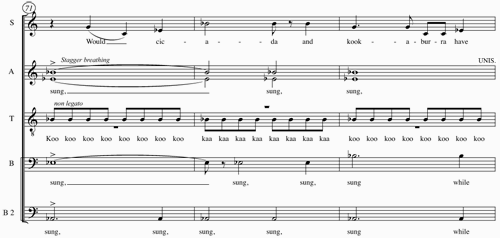
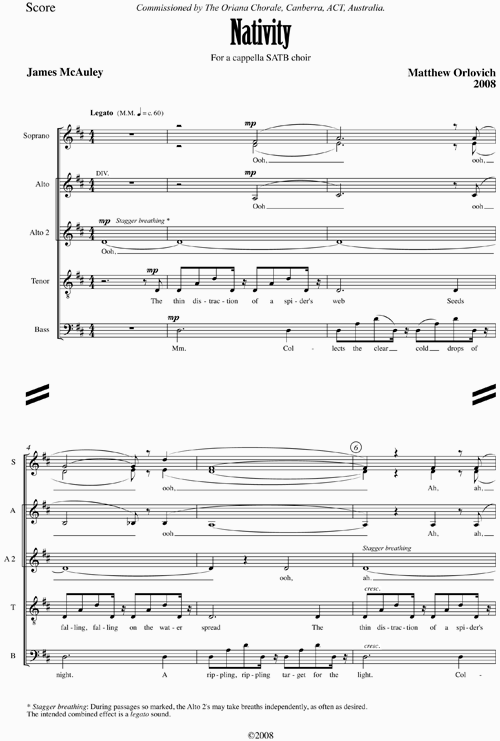
Comments
Be the first to share add your thoughts and opinions in response to this article.
You must login to post a comment.